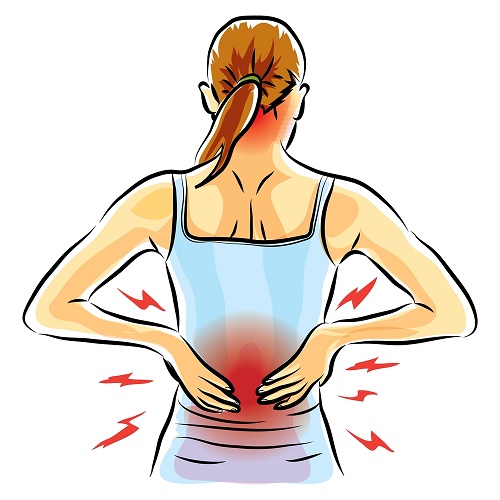8 effective muscle relaxants that are in nature

All at some point we have suffered from muscle pain and where we have seen the need to resort to muscle relaxants. Muscle aches that are temporary, due to injury or other causes, or chronic, due to inflammatory conditions that cause chronic muscle pain. The problem with the typical prescription or over the counter muscle relaxers is that they don’t cure the problem. They simply disrupt communication between the nervous system and the brain, and the entire body is affected in ways that are not desirable. Keep reading because here you will find natural ways to be able to mitigate that pain in a safe way for your health.

Certain injuries to the body are a direct result of excess muscle tension. When this stress is extreme, it can cause severe (sometimes debilitating) pain. Numerous back injuries, particularly the lower back, fall under this description. In order to relieve this pain, the muscles must return to their original state, or relax back into position.
There are two options of muscle relaxants to reduce pain resulting from muscle tension: natural or medicinal. The former can be long, while the latter usually involves a trip to a doctor. The problem with the second option is that doctors have a tendency to over-prescribe drugs with unpleasant side effects.
Table of Contents
Side effects of commercial muscle relaxants.
Common side effects of commercial muscle relaxers include:
- Drowsiness or dizziness.
- Dry mouth.
- Possible addiction or dependence.
- Urinary retention.
The use of muscle relaxants is restricted to short-term use to avoid addiction. They must be restricted; however, many people simply return to the doctor’s office and receive another prescription.
The good news is that there are many natural muscle relaxants that can help. Perhaps the most promising thing is that natural relaxants do not have the risk of dependence. Also, if side effects do occur, they are much less likely to be severe in nature.
(Note: severe back pain – particularly of the debilitating type – requires medical intervention.) This advice is not intended to be a substitute for that of medical professionals in this circumstance.)
8 effective muscle relaxants found in nature.
Here, we present 8 natural muscle relaxants that can help:
1. Epsom salts.
Using Epsom salts effectively increases the body’s magnesium levels – an important nutrient for preventing pain and certain medical conditions (e.g., fibromyalgia). Epsom salts also contain inherent properties that stabilize the body’s inflammatory response. You can use them in your night bath before sleeping.
2. Cannabis Oil.
Many people, both within and outside of the medical community, have praised the pain-relieving properties of cannabinoids for years. The mechanism of which is similar to a muscle relaxant Rx: it suppresses pain receptors from the brain.
Now, we know that the variety of the oil has the same properties – both as analgesic and anti-inflammatory. Professionals point out that quality control is particularly important in this product. As such, finding a reputable dealer is highly recommended.
3. Peppermint oil.
Essential oils are perhaps the most versatile sub-category of oils in the world. Related to this, peppermint oil has been found to be both an excellent pain reliever and muscle relaxant.
In a 2009 study, peppermint oil was found to relieve pain in patients suffering from fibromyalgia and myofascial pain syndrome.
4. Changes in diet.
Certain foods are not officially labeled “pain accentuating foods” for their ability to worsen related symptoms. Alcohol, caffeine, sugar, and trans fats are all inflammatory agents. Sugar and trans fats have also been shown to increase pain in certain conditions.
A high calorie diet often leads to obesity, which can further aggravate pain symptoms.
5. Arnica Oil.
In a 2013 study researchers made some important observations about this versatile oil. Importantly, topical application of arnica was shown to be effective in reducing inflammation, pain, and muscle damage.
Thymol – a chemical ingredient within arnica – acts on the body’s inflammatory response. Inflammation of body tissue, of course, is a major driver of muscle tension.
6. Stay relaxed.
When we experience a lot of pain, it is our natural instinct to rest. However, with severe pain (e.g., muscle spasms) as an exception, body movement is important to limit inflammation.
It is a good idea to continue normal daily activities, if possible. If the pain surfaces, adjust accordingly, go at a slower pace.
7. Chiropractic.
Some studies show that effective chiropractic techniques, such as a general “tightening” of the body, can be more efficient in reducing pain than prescription medicine. Chiropractors (most of whom hold doctoral degrees) tend to treat patients without the use of drugs.
8. Therapeutic massage.
Similarly, a licensed massage therapist may be able to relieve tension and pain without the need for drugs, surgery, or other “traditional” medical interventions.
In a study scientists tested the effects of massage therapy in a group of cancer patients. The team was specifically testing the muscle soreness and muscle relaxant effects of the therapy, if any. The scientists concluded that “the results of this study support the use of TM (therapeutic massage) as an adjunct to other therapies in improving the management of bone pain.


